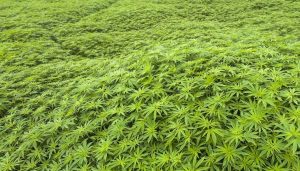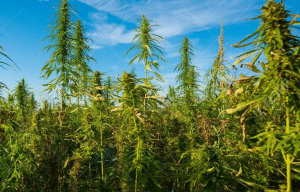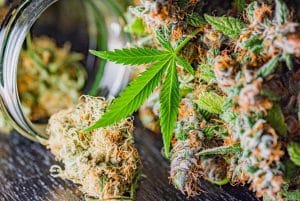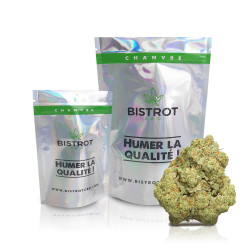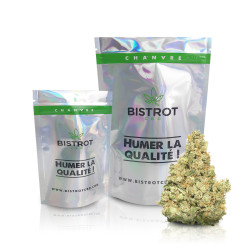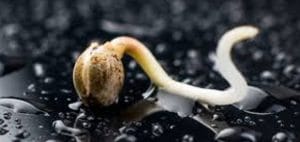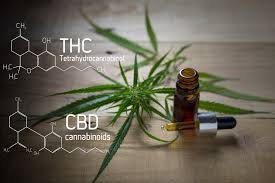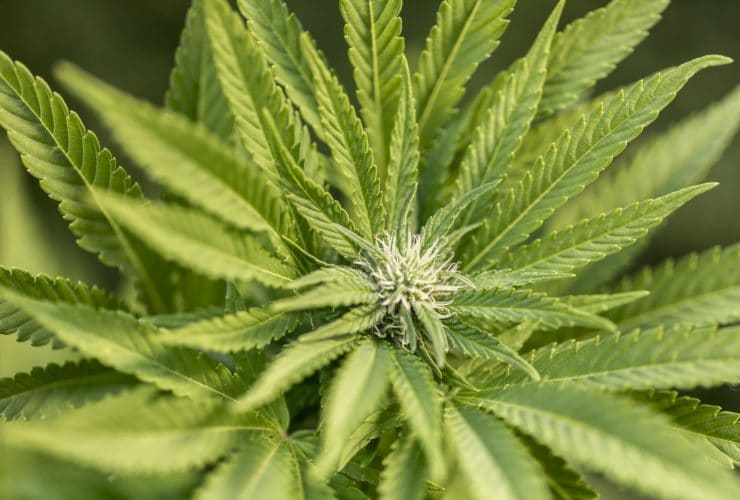
Le Cannabis sativa L. (« chanvre cultivé ») est une plante herbacée de la famille des Cannabaceae (ou Cannabacées). Décrite par le célèbre taxonomiste Carl Linnaeus en 1753, elle est longtemps considérée comme l’unique espèce du genre botanique Cannabis de laquelle seraient issues toutes les variétés de marijuana existantes.
Cannabis sativa ou indica
Aujourd’hui, des recherches scientifiques sur les 3 variétés de plantes de cannabis bien connus, l’indica, le sativa et le rudéralis, permettent de démontrer de réelles différences phénotypiques et génétiques entre ces 3 types de chanvre. Les classer comme 3 espèces distinctes paraît alors plus pertinent. A ce jour, il reste pourtant difficile de donner une classification taxonomique à l’unisson. En effet, plusieurs recherches à ce sujet se contredisent. Pour faire simple nous parlerons des hybrides à dominante sativa, indica et rudéralis. Ces derniers proviennent de croisements de variétés vulgairement nommées respectivement cannabis sativa, cannabis indica et cannabis rudéralis, plutôt que de sous-espèces dérivées du Cannabis Sativa L.
Les origines du Cannabis Sativa L
A l’origine, le Cannabis Sativa L. se trouvait essentiellement dans les pays équatoriaux comme la Colombie, le Mexique, la Thaïlande et certains pays d’Europe et d’Afrique. Mais l’intérêt que l’homme lui a porté dès sa découverte et son excellente faculté d’adaptation environnementale lui ont valu d’être exporté rapidement un peu partout dans le monde. Aujourd’hui, on retrouve d’ailleurs cette plante annuelle dioïde (plante cultivée mâle et plante cultivée femelle) dans de nombreux pays tempérés.
Actuellement le cannabis sativa se distingue de l’indica, par les consommateurs, pour ses caractéristiques bien spécifiques (hauteur et effets). Mais, initialement, le Cannabis Sativa L. a suscité la curiosité de l’homme pour la richesse et la robustesse de ses fibres. Son nom vient d’ailleurs du latin et se définit littéralement par « chanvre cultivé ». Dans certaines régions de France, ce type de cannabis destiné à l’industrie textile ou du bâtiment se nomme alors chènevis (nom donné aux graines de chanvre).
Originellement, son taux en THC (cannabinoïde le plus concentré dans une plante de marijuana féminisée) était très faible (rarement plus de 5%). Pourtant, cette plante s’utilisait déjà lors de rituels chamaniques et / ou de cérémonies religieuses. Son usage international en temps que « drogue » arrivera plus tard. L’appellation vulgaire de cannabis sativa (pour le distinguer du cannabis indica ou rudéralis) viendra avec.
Le phénotype du cannabis sativa : graines, feuilles, floraison…
Une des caractéristiques phénotypiques (apparence) les plus marquantes du cannabis sativa est sa taille. Une plante de ce type mesure en moyenne 2 ou 3 mètres. Elle peut atteindre, dans des conditions optimales, jusqu’à 6 mètres de haut.
Sa tige principale cannelée et creuse se ramifie en peu de branches. Les folioles de ses feuilles sont longues et fines (très différenciables des feuilles du cannabis indica qui rappelle celles de l’érable) et de couleur vert clair.
Les fleurs des sativas sont généralement longues et aérées. Elles s’étendent tout le long de la branche. Par opposition aux têtes denses qui se forment en grappe au niveau des entre-nœuds d’une variété indica.
Les caractéristiques phénotypiques sativa viendraient de son origine géographique.
La culture du cannabis sativa
Si comme toutes les plantes, le cannabis sativa peut se cultiver en intérieur (culture indoor), une culture extérieure (outdoor) est plus spécifique à sa hauteur vertigineuse.
Le cycle de vie (de la graine aux fleurs) des sativas est assez long et se caractérise par un important développement. Dans les régions équatoriales, la photopériode étant ce qu’elle est (durée du jour quasi identique à celle de la nuit), la croissance et la floraison sont naturellement presque simultanées. Une plante de cannabis sativa féminisée verra son développement augmenter de 200 à 300% pendant sa floraison. De ce fait, pour obtenir un bon rendement lors une culture en intérieur de ce cannabis, pour un usage récréatif ou thérapeutique, il faudra éviter une trop grande poussée végétative. Il est alors nécessaire de rapidement en phase de floraison en baisser le rapport éclairage/obscurité. Ainsi, l’énergie dépensée par le plant de sativa sera utilisée pour confectionner de grosses fleurs résineuses et non pour le développement foliaire.
Les durées de floraisons (jusqu’à maturité totale des fleurs) :
- sativa : environ 10 semaines pour un hybride et jusqu’à 18 semaines pour les landraces.
- indica : autour de 7 semaines.
Sûrement à cause de leur hauteur, le temps de floraison des sativas est généralement long.
Pour des cultivateurs, pouvoir intervenir sur la luminosité (culture indoor) est donc un facteur déterminant pour l’obtention du bonne récolte pas trop tardive. La taille des lignées pures de sativa demande une surface de culture trop importante pour être en intérieur. Afin de résoudre ce problème, de nombreuses sélections et croisements visant à équilibrer au mieux les caractéristiques intéressantes des sativas, des indicas et des rudéralis, ont donné naissance à de multiples hybrides. Ainsi, des variétés de cannabis féminisées à dominante sativa et au cycle de vie plus court sont nées (Lemon Haze). Depuis, leur nombre ne fait qu’augmenter. Aujourd’hui un nouvel éventail de variétés est proposé avec l’ouverture de l’Europe aux variétés de cannabis CBD (chanvre légal au cannabidiol).
Le Cannabis sativa en France
En France, une personne lambda n’a pas le droit de cultiver du cannabis et ce, quelque soit l’espèce. Il est cependant tout a fait possible de trouver des graines (seeds) de cannabis sativa ou indica vendues comme graines de collection. Ces banques de graines (seeds) proposent 3 types de graines bien distinctes:
- Graines féminisées : une graine féminisée permet l’obtention d’un plant femelle. L’utilisation d’une telle graine est principalement conçue pour un usage récréatif ou thérapeutique du cannabis. Ce sont effectivement ces fleurs pleines de résine qui seront l’objectif de cette culture.
- Graines régulières : une graine régulière donnera un plant mâle ou un plant femelle. Les 2 sont essentiels pour l’obtention de nouvelles graines. Ce type de graines est de plus en plus abandonné par les cultivateurs / consommateurs depuis l’arrivée des graines féminisées. Conséquence directe de leur loterie concernant le sexe. Cependant, une graine régulière reste essentielle pour effectuer de nouveaux croisements menant à de nouvelles variétés.
- Graines à auto-floraison féminisée : une graine à auto-floraison est une caractéristique génétique « piquée » au cannabis rudéralis (chanvre sauvage). Elle est particulièrement intéressante dans le sens où elle génère un individu à la croissance et à la floraison quasiment indépendantes de la photopériode. Son cycle de vie est plus ou moins prédéterminé génétiquement. L’usage de ces auto seeds est très appréciable pour les cultivateurs en herbe. Le plant généré est effectivement discret. Pour autant, il garde parfaitement les caractéristiques spécifiques de la variété de weed choisie. De plus, il produit un rendement plutôt bon, proportionnellement à sa petite taille.
Les effets et les qualités organoleptiques du cannabis sativa
Comme toutes les variétés de weed, le cannabis sativa possède un grand nombre de principes plus ou moins actifs. Ces molécules agissent de façon indépendante ou synergique (effet d’entourage). Hélas, les connaissances scientifiques et la recherche sur le cannabis ont du mal à avancer à cause des restrictions légales. En effet, ces dernières interdisent la culture et la détention de plants de weed. Par conséquent, elles freinent les tentatives de compréhension de ses produits et leurs effets chez l’homme.
Malgré un manque de connaissances sur le fonctionnement de ces molécules dans l’organisme, quelques unes de leurs caractéristiques sont révélées.
Les cannabinoïdes
Ce sont des composés actifs que produisent les trichomes d’un plant de cannabis. On en compte pas moins de 70 en tout parmi les différentes variétés de weed existantes. On les retrouve, respectivement, à des teneurs plus ou moins importantes selon les plants. Peu de ces organites s’identifient clairement. Mais, on sait que les cannabinoïdes THC (tétrahydrocannabinol) et CBD (cannabidiol) sont les plus synthétisés par la plante. Ils sont donc les plus étudiés actuellement pour leurs vertus respectives.
Le THC produit un effet psychoactif euphorisant. Par opposition au CBD (cannabidiol) qui produit un effet relaxant non psychotrope. Ces deux cannabinoïdes ont des effets qui leurs sont propres. Ils ont donc une influence sur l’effet global induit par la consommation de weed, selon leurs proportions. L’espèce de Cannabis Sativa L. décrite par Carl Linnaeus produit en réalité peu de THC. Mais aujourd’hui, les variétés de cannabis sativa sont généralement les beuh les plus puissantes en THC (au détriment du CBD).
Les terpènes
La résine de cannabis contient, comme beaucoup d’autres plantes, des terpènes. Ces métabolites sont en majorité responsables de la qualité des propriétés organoleptiques des fleurs de cannabis. Ils auraient un rôle important dans l’effet d’entourage (collaboration entre molécules actives). Malgré leur large dispersion dans les variétés de cannabis, certains terpènes se retrouvent tellement dans une variété de weed qu’ils en deviennent son parfum signature en se combinant subtilement aux autres. C’est notamment le cas chez les sativas, au profil aromatique plus étendu que chez les indicas.
Parmi cette pluralité, on retrouve 2 terpènes bien connus et représentatifs d’hybrides à dominante sativa tout aussi célèbres. D’une part le limonène, qui apporte une odeur d’agrumes caractéristique de la Lemon Haze CBD. Et le linalol, qui donne une odeur florale avec une note d’épices à l’Amnésia Haze CBD. De façon plus générale, les terpènes produits dans la résine des variétés sativas confèrent des arômes plutôt floraux et tropicaux.
Les flavonoïdes
Ils sont très largement répandus dans le règne végétal. Leur caractéristique principale est de déterminer une couleur aux fleurs. Ainsi, ils attirent les pollinisateurs et permettent la fécondation. La célèbre variété Purple Haze et l’unique Orange Bud féminisée doivent en partie leur nom, à la couleur particulière de leurs fleurs. Les flavonoïdes auraient également un rôle dans l’effet d’entourage.
Le ratio THC / CBD à une action significative sur le type d’effet ressenti par un consommateur de cannabis. Mais, les autres cannabinoïdes, terpènes et flavonoïdes présents dans le produit ont également un rôle déterminant sur cet effet. Ils le prolongent, l’optimisent ou le facilitent directement ou indirectement. Contrairement aux sensations que procurent les indicas qui tendent à la relaxation du corps, au « stone corporel » voir au couch-lock (scotché au canapé), les variétés de cannabis sativa stimulent l’esprit. Les adeptes parlent d’un véritable « high cérébral » qui encouragerait la créativité après une consommation de skunk.
En France, en 2021, la présence de THC dans une variété de cannabis sativa ou indica la définit comme stupéfiant. Seuls des produits CBD (fleurs, seeds, feuilles, huile, …) issus d’une variété sativa ou indica CBD légale (THC<0,2%) sont tolérés.
FAQ : Cannabis Sativa
[sp_easyaccordion id=”10661″]
